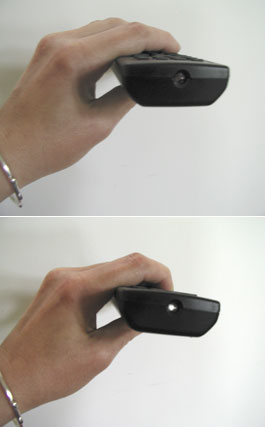Digital infrared cameras – how can you tell if your camera is able to do digital infrared photography? Well, if you have a digital point & shoot camera – with an LCD viewing screen that you compose your shot in, there’s a super easy way to tell – more or less.
To find out if you have a digital infrared camera, try this quick test:
Hunt down a TV, VCR or DVD player remote control. Look at the end that points to the TV (or VCR etc), and you’ll see a little bulb or flat back plastic. This is the transmitter that sends the signal from the remote to your device. And, guess what? The signal (usually) uses infrared waves!
“OK, so what does all this have to do with my camera,” you ask?! Ok, I’ll get to the point!
Turn on your camera, and point the remote at it and look at it through your LCD screen. If you see your remote sensor light up with a white light, while looking through your camera LCD, there’s a very good chance that you camera will take infrared photos.
See what I mean?

If you have a digital SLR camera, like the Nikon D70, D50, D200 etc. you will have to perform the same test, but you have to take an actual photo of the remote control since these cameras do not have an LCD preview panel.
If your image shows the white light like the images above, your camera has the potential to make Infrared images. Now, I say potential because the DSLRs have some advanced technology in them to PREVENT infrared light from reaching the sensor – since normally IR light is unwanted in fine photographs.
From my research, the Nikon D70 seems to be the best bet for a digital SLR since the newer models have even more IR blocking technology. Some point & shoot cameras are fine too but the overall quality of the images will be less, and if you want to enlarge any of your art, you won’t be bale to make reprints larger than about 8×12.
As for Canon cameras, I have not done any detailed hands-on research, but at one of our workshops Canon shooters generally found their cameras were not as sensitive to IR as the Nikons were.
Click here to go to Infrared Digital Photography Step 2, and see what you need to do next to start taking invisible light photos.
